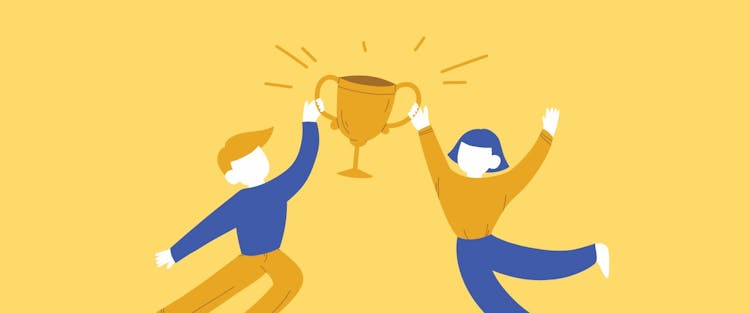Do you find yourself staring at your computer for long minutes, unaware of time slipping by? Do you enter a room and suddenly cannot remember why you stepped in the first place? Is it a herculean task for you to sit through ten pages of a book without reaching for your phone? If yes, your focus needs some work and fast.
Actually, yours is not a unique situation. Many adults like you have issues concentrating on a given task. However, in this fast-paced world of ours, you can’t afford to be not focused at all times. Thankfully, this article comes to your rescue! With the tips and tricks from Hyperfocus by Chris Bailey, you will get in the top percent of folks who have mastered the art of concentration.
Ready to get on the ride? Let’s get started!
Why is everyone losing focus?
Bailey states that there is a finite amount of time that we can focus on. Thus, even for the most disciplined person, you get to lose your concentration at some point. That is basically your brain taking a break to recalibrate. However, it is also important to acknowledge that everyone seems to have a shorter attention plan these days.
Here are the possible reasons for that:
1. Stress
Stress is one of the most prevalent causes of a lack of focus. Although stress can sometimes lead to increased productivity, generally, the more stressed you are, the less likely you are to concentrate. Thus, if you have a high-powered job that leaves you exhausted at the day’s end, your concentration could take a hit from it.
2. Anxiety
Here, anxiety is closely related to stress and can be a huge contributor to a loss of focus. If your concentration levels have taken a hit lately, reflect on how your anxiety has been acting up.
3. Chaos
We live in a world that is seemingly constantly noisy. On the subway, someone’s always talking or playing music. At the local diner, having a quiet meal is impossible. At home, the television is forever turned on, filling our homes with news of actual chaos. Little wonder the average person has challenges sustaining concentration for a long time.
4. ADHD
Attention Deficit Hyperactivity Disorder (ADHD) is one of the causes of a limited attention span. Even though just a small percentage of adults suffer from the disorder, it is still worth looking into. Especially, if you chronically struggle with staying true to one task from start to finish.
With all that in mind, how do we keep our focus at its best? Let’s turn to the tips from Hyperfocus!
How to know the limits of your focus
Hyperfocus is not the same as a limitless focus. Yes, there is such a thing as the finiteness of focus. If not, you’d be able to have four conversations going on at the same time while being able to reply to work emails.
It is, of course, possible to carry out two tasks at the same time relatively efficiently. The challenge emerges as your simultaneous tasks increase. If you’ve ever sent a work email distracted, you clearly must have experienced the mortification that comes with errors you discover later.

While you cannot enlarge your focus, you can increase how much you can achieve within that time frame. This is the idea in Hyperfocus. Bailey recommends that one way to do this is by identifying your attentional space.
This is an imaginary circle where you have a couple of interests juggling for attention. Be mindful, noting what you ought to do at any time and what is distracting you. Also, pair tasks that go together, e.g., listening to a podcast on your morning run. Alternatively, carry out just one complex task at a time. This way, you will be making the most of the limited attention span you have.
How to refocus your focus
It is no surprise that Bailey dedicated an entire chapter in his book to discussing the term hyperfocus. As you must already tell, hyperfocus is the state of being entirely focused on one task at a time.
It does not mean that pesky distractions will not show up. Distractions can be external — such as your favorite song coming on while trying to meet a work deadline. They can also be internal, such as when your mind wanders to what you should get your partner for their birthday. However, hyperfocus equips you to anticipate better and eliminate them.

Bailey teaches that to attain hyperfocus, the first step is to zero in on one task. Shun procrastination and move headlong into the task at hand. The next step is to eliminate all possible external distractions.
Here, ostensibly, you remove anything that could potentially cause distractions. Understand that it is harder to shut off distractions than to prevent them from cropping up in the first place. Next, focus on the task at hand. Finally, given that distractions are inevitable, continuously draw your attention back to the task you have at hand.
How to be more intentional
Intention lets you know how to spend your attention and time. Thus, it gives you direction, making sure that only the things that matter are at the top.
“Attention without intention is wasted energy.“
Chris Bailey
One way to take charge and be intentional about focusing your attention is by applying the rule of three. This rule was developed by J. D. Meier. Following the rule, you decide on the three most important things to accomplish every morning. This channels your energy and focus, enabling you to achieve more.
How to learn the ‘when’ of hyperfocus
It is easy to roll out tips on how to become hyperfocused. However, knowing the time to put in energy is also quite critical. Why is this necessary? Imagine hyperfocus to be like a muscle. The more time you spend engaged in it, the more developed it becomes.
“Lack of direction, not lack of time, is the problem.”
Zig Ziglar
So, what are the ‘whens’ of hyperfocus? Firstly, engage in hyperfocus as often as you can. In the book, Hyperfocus, Bailey suggests carving out chunks of your time every week to work on your attention span. The requirements of work and family might make it difficult to take out time to focus on one task at a time. However, the fulfillment that comes with accomplishing a task within a given period should make it worth it.

Also, given the challenge mentioned above of work, you may have to hyperfocus on work. Sadly, we live in societies where we strive to make do, rake in income, and pay bills. Thus, you could scarcely have time to work on your focus. What then can you do? Incorporate your routine into your job. Steal little amounts of time in between tasks. As soon as you have even a window of opportunity, slide into hyperfocus mode.
Moreover, test your hyperfocus mode on difficult and complex tasks. The more boring a task is, the more likely you are to shelve it to a future date. Test the skills you’ve learned on these difficult tasks. That will show you if you are actually making progress.
While you are at it, check out the Headway app, where you will find a summary of Bailey’s book. It is understandable if you are unable to finish a book right now – after all, you are working on improving your attention span. In that case, the 15-minute summary on the Headway app is just what you need.
Do not forget; it is important to work on the new habits consistently. Thus, you may want to study other materials on the subject. The Headway app is a great place to find wonderful resources. Even more remarkable is the fact that the books there are all 15-minute summaries you can read on the go!




